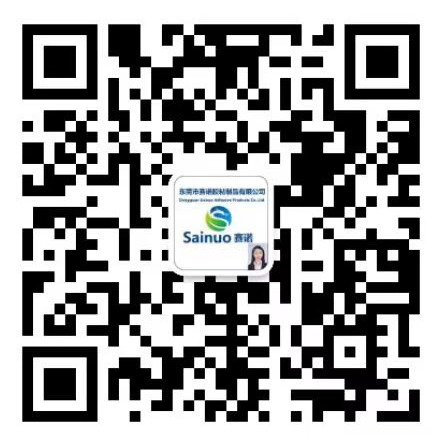Adhesive Films for Secure and Flexible Labeling Solutions
Understanding Adhesive Films for Labeling Applications
Key Properties of Adhesive Films for Secure Bonding
Adhesive films stick to all sorts of surfaces pretty well, which makes them essential for putting on labels in tons of different sectors from groceries to medicine packaging and shipping containers. What really matters when it comes to how good these films work is stuff like how easy they come off (peel adhesion), their ability to hold up against sideways pressure (shear strength), and how internal layers hold together (cohesive strength). Labels need to stay put no matter what, whether they're getting bumped around during transport or sitting through extreme weather conditions. Studies show that films with strong shear strength handle side-to-side forces much better, so they're great for items that get moved around a lot or shipped long distances. Outdoor labels also need protection against things like rainwater and sunlight exposure, otherwise they'll fade away or just fall off after a while, which nobody wants.
Flexibility Requirements in Modern Labeling Solutions
Flexibility has become a must-have feature in today's labeling technologies, particularly when dealing with materials that need to stick to all sorts of odd shapes and surfaces. The ability to bend and stretch makes these sticky films work wonders across different uses, from food packaging to industrial products. When applied properly, flexible adhesive films can wrap tightly around almost any product form while still holding on strong enough to keep branding intact and meet regulatory standards. Take online retail for instance where packages vary so much in size and shape. Here, labels really need to handle repeated flexing without peeling off during shipping or handling. Getting input from actual users during the design phase helps create labels that not only function well but also look good on shelves, striking that balance between practicality and visual appeal that keeps customers coming back.
Types of Adhesive Paper for Industrial Use
Adhesive Kraft Paper Roll Characteristics
Kraft paper with adhesive backing stands out because of its toughness and flexibility, which works well whether dealing with heavy duty items or lighter materials across different industries. This stuff can really hold up against tearing and keeps moisture at bay pretty effectively too, so it finds its way into all sorts of places from packaging plants to construction sites. Most commonly sold in rolls, the adhesive paper makes the application process straightforward and budget friendly for businesses. What makes Kraft paper even better? It's good for the planet too since it breaks down naturally and goes into recycling bins without issues. Many manufacturers are starting to care more about going green these days, and that's putting Kraft paper in a good position. Even when exposed to rough handling or tough environments, the paper stays intact, which is why so many industrial operations keep coming back to it again and again.
Self-Adhesive Paper vs Contact Paper Comparisons
People love self adhesive paper because it sticks right on without needing any extra glue, something regular contact paper just doesn't do. Traditional contact paper requires all sorts of work to get it to stick properly, while self adhesive stuff bonds instantly. This makes a big difference when working with contact paper that always needs careful smoothing to get rid of those pesky air bubbles. For businesses out there, self adhesive papers come in different finishes from matte to glossy, giving them options depending on what they need for their brand image or practical requirements. The difference between these types matters a lot in factories where things are produced at scale. Picking the correct adhesive solution isn't just about convenience either. Getting this right can really speed things up across the board, impacting both how much stuff gets done and ultimately cutting down expenses in the long run.
Specialized Applications of Self-Adhesive Kraft Paper
Kraft paper that sticks to itself has become pretty popular across different areas like labels, boxes, and even craft projects because it holds on really well. Works great with those thermal printers and inkjet machines too, so people can print whatever they need right onto it for all sorts of purposes. A lot of companies in medicine and food packaging are turning to this stuff lately since it meets all those strict safety regulations they have to follow. What's interesting is how it creates those telltale signs when someone tries to open a package without permission first. That kind of security matters a lot for keeping products safe from tampering. Because it adapts so easily and checks off all the regulatory boxes, many businesses find themselves relying on self adhesive kraft paper for their special needs where both performance and protection count.
Benefits of Pressure-Sensitive Adhesive Films
Enhanced Security Features in Label Adhesion
Pressure sensitive adhesive films stick really well to surfaces so labels stay put without coming off or shifting around, which helps keep products looking good and functioning properly. Many manufacturers are now adding tamper evident features to their packaging these days. These are basically labels that show when someone has tried to open or remove them, giving an extra layer of protection for goods on store shelves. Studies have shown that consumers actually notice and appreciate this kind of security feature, which builds trust between brands and customers. This matters a lot in sectors like pharmaceuticals and food packaging where regulatory requirements demand clear evidence of product authenticity and safety throughout the supply chain.
Temperature Resistance and Durability Factors
Adhesive films that respond to pressure can handle pretty harsh temperature swings, surviving everything from subzero cold to blistering heat. That's why they work so well on cars and big industrial equipment where conditions get tough. These films also stand up to sunlight damage, resist scratches, and don't break down when exposed to various chemicals. The result? Labels stay put and remain readable for much longer periods than standard alternatives. Many manufacturers have found that switching to these premium adhesives actually saves money over time because they don't need to replace worn out labels as often, which cuts down maintenance costs significantly in the long run.
Selecting the Right Adhesive Film Substrate
Material Compatibility Considerations
Picking the right adhesive film substrate starts with knowing how materials work together. Getting this right matters a lot because it affects how long the film lasts and performs overall. Different surfaces react differently to adhesives. Take glass versus some plastics for example the same adhesive might stick great on one but barely hold on the other. That's why running some tests on a smaller scale makes sense before going all out with production. These tests help confirm if the sticking power matches what we need for good results. Industry pros always mention this testing phase as something worth investing time in since skipping it can lead to expensive errors down the road and weak bonds that don't last.
Environmental Conditions and Adhesive Performance
The environment makes all the difference when it comes to how good adhesives actually work. Things like moisture levels, changes in temperature throughout the day, and contact with various chemicals really affect whether stickers stick properly or not. That's why companies have started making special kinds of films meant specifically for tough environments where regular stuff would fail. Take some of these advanced materials for instance they're built to handle high humidity situations and big swings between hot and cold without letting go. When picking out what works best for a particular job, looking at what the manufacturers say about their products performance in real world conditions helps a lot. This information gives people a better idea of which films will hold up where they need them most.
Innovations in Adhesive Contact Paper Technology
Recent Advances in Removable Adhesive Films
The latest advances in peelable adhesive films are changing how we think about sticking things together. What's really exciting about these new materials is that labels can be moved around again and again without losing grip or leaving behind residue when taken off. Retail stores find this feature especially useful since price tags often need adjusting several times before getting stuck permanently on shelves. Consumer research shows most people actually prefer labels that come off cleanly too. Shoppers appreciate not having to fight with stubborn stickers that tear packaging or leave goo everywhere. The market seems to be shifting toward adhesives designed with real world usage in mind rather than just laboratory perfection.

 EN
EN
 AR
AR
 BG
BG
 HR
HR
 CS
CS
 DA
DA
 NL
NL
 FI
FI
 FR
FR
 DE
DE
 EL
EL
 HI
HI
 IT
IT
 JA
JA
 KO
KO
 NO
NO
 PL
PL
 PT
PT
 RO
RO
 RU
RU
 ES
ES
 SV
SV
 CA
CA
 ID
ID
 SR
SR
 SK
SK
 SL
SL
 SQ
SQ
 GL
GL
 HU
HU
 TH
TH
 TR
TR
 FA
FA
 MS
MS
 GA
GA
 MK
MK
 UR
UR
 BN
BN
 LA
LA






